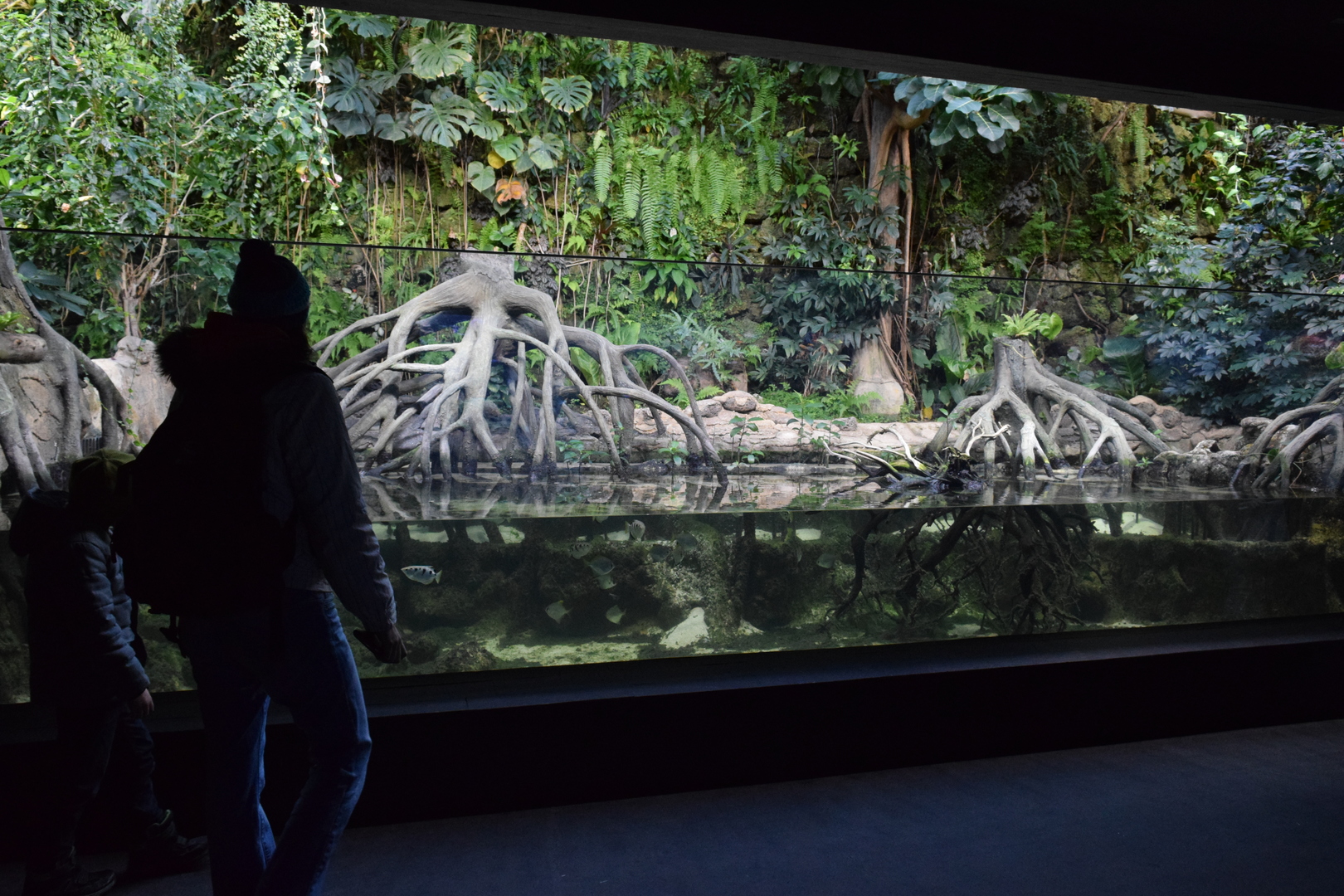Aquarium of Brackish water

This ‘Mangrove in the Indo-Pacific‘ aquarium with brackish water simulates the tidal estuary found at an inlet, the outlet of a river, where the level of water isn’t constant and ebbs and flows along with the salinity. At Zoo Zurich these two aspects were also considered and, depending on the time you will arrive at the tank, the water level could be high or low. To enable visitors to observe the various stages of the tidal cycle, the time between the full tank and the ’empty’ tank is four a half hours, instead of six, with four hours to fill/empty it, and a half hour break. Salinity is between 3% and 8%. This imperfection is on purpose, to better simulate the fluctuations found in nature. The tank contains 14’000 liters of water, when full, and 6’000 when the sea level is low. The automatic refill, made with osmosis water, isn’t precise and continuous (also because it would be very difficult to refill a tank which doesn’t have a constant water level) and this is the first factor that helps salinity to vary.
The second factor that makes salinity instable is a surprise from Sven, that activates something hidden, and shortly after we hear and see lightnings and a strong artificial rain (made of osmosis water) arrives on the tank. For the people looking at the tank is a big surprise: rain comes only two/three times a day, and last for only for a few minutes.
The filter of this tank is the same as the other freshwater tanks. The most particular thing is the container of approx. 8’000 liters that contains the water issued for the high tide.

The mangroves of this aquarium are real, they are on the ground during the low tide and partially submerged by water during high tide. The plants growing on wall are also live and are not made of plastic. In this aquarium we can admire some fishes that are very particular.
We first noticed the Atlantic Mudskipper (Periophthalmus barbarus), they can stay for hours out of the water and can be observed on the sand in case of low water level and in the water, during high tide. In the same aquarium there is another type of fish, equally interesting: Archerfish (Toxotes jaculatrix), named after their predatory tactic of spraying water to catch insects that are on the leaves near them, causing them to fall in the water in order to eat the caught insects.
We hope that you liked this article and we look forward to present you the details of the reef aquarium.



















